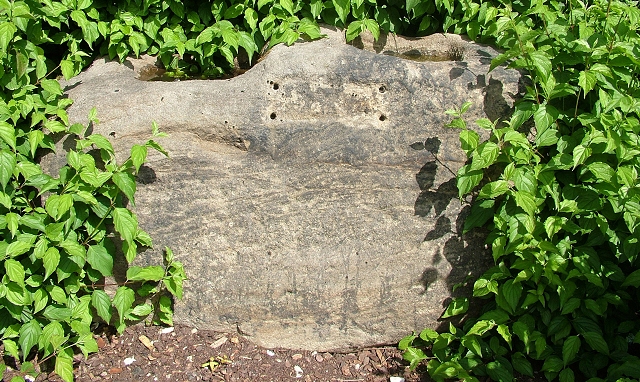Plague stones are found across England, usually in the form of hollowed-out stones or boulders, relics of the medieval plagues. Stone boulders with hollowed-out depressions, or sometimes the bases of crosses, were filled with vinegar and placed at or near parish boundaries. Vinegar was used as a disinfectant in the hope that the community could buy food and other goods without fear of contagion. Residents placed coins in the vinegar-filled hollows to pay outsiders for goods or food left by the stone, believing that might halt the spread of the deadly disease.[1]
One of the most notable plague stones is at Eyam in Derbyshire;[2] there are others at Dorchester,[3] Hob Moor Local nature reserve and ancient common in York in York,[4] Penrith,[1] Bury St Edmunds,[5] Gresford, and Hereford.[6] The Ackworth plague stone on the road to Pontefract dates from 1645.[7] The Great Stone
Local nature reserve and ancient common in York in York,[4] Penrith,[1] Bury St Edmunds,[5] Gresford, and Hereford.[6] The Ackworth plague stone on the road to Pontefract dates from 1645.[7] The Great Stone Grade II listed structure in Stretford, Greater Manchester, probably the base of an Anglo-Saxon cross shaft. in Stretford
Grade II listed structure in Stretford, Greater Manchester, probably the base of an Anglo-Saxon cross shaft. in Stretford One of the four major urban areas in the Metropolitan Borough of Trafford, Greater Manchester., Greater Manchester, on the south side of the Roman road from Manchester to Chester, a glacial erraticRocks that differ from the type native to an area. once used as the base of a medieval boundary cross, is also thought to have been used as a plague stone.[8]
One of the four major urban areas in the Metropolitan Borough of Trafford, Greater Manchester., Greater Manchester, on the south side of the Roman road from Manchester to Chester, a glacial erraticRocks that differ from the type native to an area. once used as the base of a medieval boundary cross, is also thought to have been used as a plague stone.[8]



